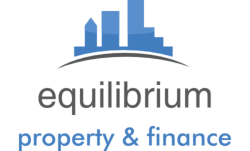Looking at refinancing your home loan? Then look beyond your
monthly repayments....
Let's use some very basic figures for the purpose of this example. I am going to use the figure of a $300,000 mortgage. This seems to be the figure the media like to use when there is a shift in interest rates up, down or neutral.
So here goes;
Mortgage $300,000 x 30 years x 7.5% (average over 30 years)
= $2,097.64 per month
= $755,151.67 in repayments over 30 years
= $455,151.67 in interest repayments over 30 years
The industry average tells us that customers refinance their loans every 4 years. There is nothing wrong with refinancing, in fact since the introduction of the "No Exit Fee" legislation; it makes perfect sense to shop around and continue to shop around throughout the period of time you have a mortgage.
The biggest mistake people make when refinancing is refinancing for another 30 years. Of course the monthly repayments look attractive - they are meant to look attractive. Take a look at this example below assuming you had of locked in a fixed rate at 7.5% some 5 years when many panicked and fixed their home loan during the years when we were experiencing interest rates rising.
Mortgage $300,000 x 30 years x 7.5% (5 year fixed)
= $2,097.64 per month
= $109,710.92 interest paid over 5 years
= $16,147.69 principal paid over 5 years
Now, you may be starting to see where I am coming from. For the $16,147.69 paid off in principal over a 5 year period, you pay close to $110,000 in interest. To be able to make the absolute most in refinancing your mortgage, you should really refinance the amount that is owed for the number of years left on your original mortgage so that the $110,000 does not go to waste.
If you were to refinance the remaining amount owing over 30 years of say $285,000, the repayments per month would be $1,688.62, a difference per month of $409.02. The monthly difference would be very welcomed by the vast majority of families, however, if you were to refinance for 25 years (taking in to account you have already paid 5 years worth of interest), the repayments would be $1,817,14.
The difference in total interest paid between loans at 5.89% over 25 years compared to a loan at 5.89% over 30 years is $62,758.67. That is a hell of a lot of money people should be taking in to consideration when looking for a cheaper monthly repayment. Of course the likelihood of seeing interest rates stay neutral over a 25 or 30 year period is 0, but the point of this example is to demonstrate just how much money people are willing to give away by constantly refinancing for a further 30 years. The only true beneficiaries of people refinancing for another 30 year term are the shareholders of banks.
Happy 2013 to all!!
Iggy Damiani
